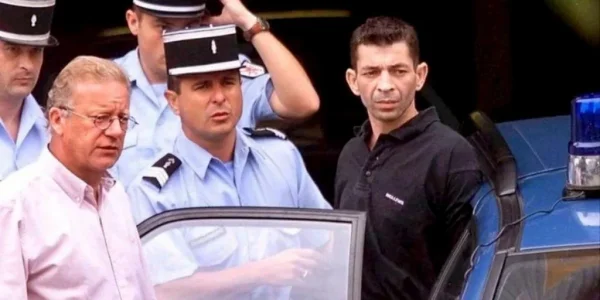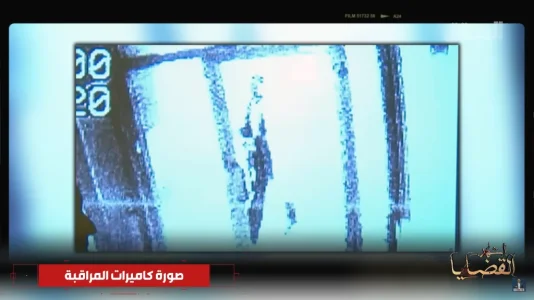rayene125
New Member
- Joined
- Feb 28, 2025
- Messages
- 1
- Reaction score
- 1
In May 1999, a gruesome quadruple homicide shocked the quiet village of Monfort in the Gers region of France. Four Dutch nationals Arie and Marianne Van Hulst, along with Dorothéa and Johan Nieuwenhuis were brutally murdered in their holiday home, "La Boupillère." Arie was shot multiple times with a hunting rifle, while the others were bound with adhesive tape and killed with a knife.
Kamel Ben Salah, a Franco-Tunisian painter working informally on the property, became the prime suspect. He was reportedly the last person to see the victims alive and had a prior criminal record. Investigators found his fingerprints on adhesive tape used to restrain the victims and traces of his blood at the crime scene.
Despite the lack of direct eyewitnesses or definitive forensic evidence placing him at the scene during the murders, Ben Salah was convicted in 2002 and sentenced to life imprisonment with a 22-year minimum term. He has consistently maintained his innocence.
The case remains controversial, with debates over the strength of the evidence and the possibility of other perpetrators. Some argue that the investigation was influenced by media pressure and circumstantial factors
Now for the evidence presented there :
but all of these evidance could be explained
what's more it was impossible for a single person to kill all 4 people alone without getting a scratch or a blood on him which was not found .
there's also the lack of confession where he still insists that he's innocent .
and one more important clue who got ignored by the investigators was the discovary of the a car that belongs to a german serial killer called dieter zurwehme .
you can find details of the murder in this file ( it's in french tho ) Tuerie de Monfort : il y a 26 ans, « l’affaire du siècle » dans le Gers
Kamel Ben Salah, a Franco-Tunisian painter working informally on the property, became the prime suspect. He was reportedly the last person to see the victims alive and had a prior criminal record. Investigators found his fingerprints on adhesive tape used to restrain the victims and traces of his blood at the crime scene.
Despite the lack of direct eyewitnesses or definitive forensic evidence placing him at the scene during the murders, Ben Salah was convicted in 2002 and sentenced to life imprisonment with a 22-year minimum term. He has consistently maintained his innocence.
The case remains controversial, with debates over the strength of the evidence and the possibility of other perpetrators. Some argue that the investigation was influenced by media pressure and circumstantial factors
Now for the evidence presented there :
- DNA and Fingerprint Evidence:
- Investigators discovered Ben Salah's DNA on two pieces of adhesive tape used to bind the victims.
- His fingerprints were also found on the adhesive tape.
- Presence at the Crime Scene:
- Ben Salah was reportedly the last person to see the victims alive, having worked as a painter in their home.
- Inconsistent Statements:
- During the investigation, Ben Salah's explanations reportedly varied in response to emerging evidence, which prosecutors argued indicated deception.
- Attempted Use of Victims' Bank Cards:
- Shortly after the murders, there were attempts to withdraw money using the victims' bank cards. While Ben Salah was not directly observed making these withdrawals, the timing and circumstances raised suspicions.
but all of these evidance could be explained
- Contamination of DNA Evidence:
- The defense argued that Ben Salah's DNA on the adhesive tape could have resulted from his legitimate presence in the house during painting work, suggesting possible contamination.
- Lack of Direct Evidence:
- No eyewitnesses placed Ben Salah at the scene during the time of the murders, and no definitive forensic evidence directly linked him to the act.
- Alternative Suspects and Unexplored Leads:
- The defense highlighted that other potential leads, such as unidentified DNA on one of the victims and sightings of a suspicious vehicle near the crime scene, were not thoroughly investigated.
- Questionable Identification in Surveillance Footage i will put it in the attachement file :
- A surveillance photo from a bank ATM was presented as potential evidence, but its poor quality made it inconclusive. Ben Salah denied being the individual in the footage.
- Psychological Profile:
- Psychiatric evaluations described Ben Salah as non-violent and anxious, contradicting the profile of someone capable of committing such brutal murders
what's more it was impossible for a single person to kill all 4 people alone without getting a scratch or a blood on him which was not found .
there's also the lack of confession where he still insists that he's innocent .
and one more important clue who got ignored by the investigators was the discovary of the a car that belongs to a german serial killer called dieter zurwehme .
you can find details of the murder in this file ( it's in french tho ) Tuerie de Monfort : il y a 26 ans, « l’affaire du siècle » dans le Gers


